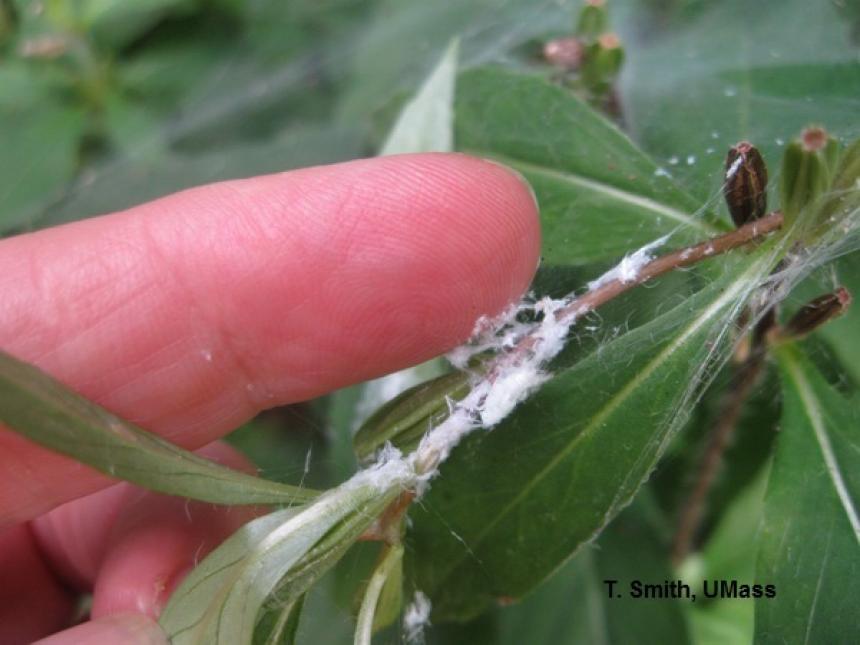Planthoppers sometimes referred to as "flatids” may be confused with wooly aphids or mealybugs. Nymphs (in photo) are surrounded by a white cottony wax that covers its body and may be seen on plant stems. Planthoppers also congregate in groups. Nymphs also produce honeydew which may coat the plant and encourage production of black sooty mold fungi.
Planthoppers are related to aphids. Planthoppers "hop” and aphids walk slowly or drop off plants when touched. Planthopper adults are 1/4 - 3/8" long, purplish blue, lime green, or powdery white, and they hold their broad wings vertically in a tent-like fashion covering the sides of the body and legs. They usually have little impact on the overall health of garden plants (astilbe, evening primrose, hydrangea, zinnia, vernonica, roses, beebalm and many others) and seldom become more than a nuisance pest. Rarely is there enough damage to require pesticide treatment. Nymphs are often washed away by rain or gardeners can use a coarse stream of water to wash them off affected plants.
